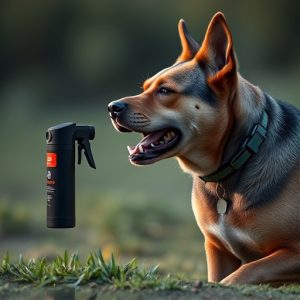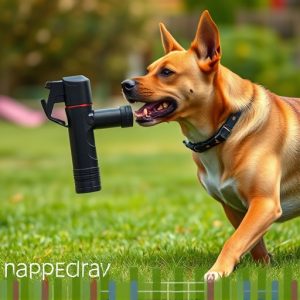Reliable Pepper Spray Triggers for Canine Law Enforcement Training
Reliable trigger mechanisms for Mace-type canine pepper spray are essential tools in modern policing…….
Reliable trigger mechanisms for Mace-type canine pepper spray are essential tools in modern policing, ensuring swift and safe control of aggressive dogs. These mechanisms, designed for easy deployment under high pressure, deliver controlled doses of capsaicin, enhancing officer safety. Proper training, protective gear, and ventilation are crucial to mitigate potential irritation during use. Advanced engineering prioritizes consistency and reliability, making these triggers vital for de-escalating dangerous situations.
“Unleashing a powerful tool in law enforcement, canine pepper spray—also known as mace—has become an essential component in handling aggressive dogs. This article delves into the intricate world of police-grade canine pepper spray, exploring its composition, effects, and reliable trigger mechanisms. We examine the design and functionality of these devices, providing insights into their training applications and safety precautions. By understanding these aspects, we can ensure effective use while prioritizing officer and dog safety.”
- Understanding Canine Pepper Spray: Composition and Effects
- Reliable Trigger Mechanisms for Mace: Design and Functionality
- Police Grade Canine Pepper Spray: Training, Application, and Safety Precautions
Understanding Canine Pepper Spray: Composition and Effects
Canine pepper spray, often referred to as dog pepper spray or canine mace, is a specialized non-lethal agent designed to temporarily incapacitate and control aggressive dogs. Unlike traditional pepper spray used by law enforcement, canine pepper spray has been tailored to be more potent but safer for animals. It’s composed of capsaicin, the active ingredient found in chili peppers, which irritates the dog’s eyes, nose, and throat when sprayed. This irritation leads to temporary blindness, coughing, sneezing, and difficulty breathing, allowing handlers or officers to gain control and de-escalate the situation.
The reliability of trigger mechanisms for mace is paramount in ensuring its effectiveness during encounters with distressed or aggressive dogs. Modern canine pepper spray devices are equipped with advanced safety features and user-friendly designs, making them easy to deploy even under stressful conditions. These reliable trigger mechanisms, often featuring quick-release or one-touch activation, guarantee a fast response time, which can be crucial in potentially dangerous situations involving out-of-control pets.
Reliable Trigger Mechanisms for Mace: Design and Functionality
Reliable Trigger Mechanisms for Mace are a crucial aspect of their design, ensuring swift and effective deployment in various policing scenarios. These mechanisms must be robust, intuitive, and easy to operate under high-pressure situations. Modern mace (or pepper spray) canisters often feature advanced trigger systems that incorporate precise engineering to deliver a controlled dose of irritant with each activation.
The functionality of these triggers typically involves a simple yet dependable mechanism where the user depresses a button or leverages a lever, which then releases a burst of pepper spray. Some models employ a finger-activated trigger, allowing officers to operate them quickly and discreetly. Others may have a more visible, manual lever for increased visibility and ease in use. The design should prioritize reliability, ensuring that the trigger responds consistently even in intense, stressful environments, ultimately enhancing officer safety and efficiency during operations.
Police Grade Canine Pepper Spray: Training, Application, and Safety Precautions
Police-grade canine pepper spray is a specialized tool designed for law enforcement agencies, offering a non-lethal means to subdue and control aggressive dogs. This potent aerosol contains capsaicin, the active ingredient responsible for the burning sensation associated with chili peppers. The application of this spray requires precise timing and technique. Officers are rigorously trained to ensure they activate the reliable trigger mechanisms for Mace accurately and safely, minimizing exposure to both the target dog and bystanders.
Training involves learning proper grip and activation techniques, understanding wind patterns, and knowing the effective range. Officers must be adept at assessing situations swiftly, as every second counts during a confrontation with an unruly canine. Safety precautions are paramount; protective gear is worn to shield against potential eye or skin irritation from the spray’s residual effects. Proper ventilation is also crucial, especially in enclosed spaces, to prevent the buildup of pepper spray fumes.
Canine pepper spray, especially police-grade varieties, offers a powerful tool for law enforcement and trained professionals. Understanding its composition, reliable trigger mechanisms, and proper application is crucial for effective deployment while ensuring safety. With the right training and precautions, this technology can navigate complex situations, providing a swift and strategic advantage in the field.

